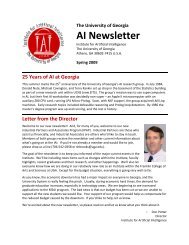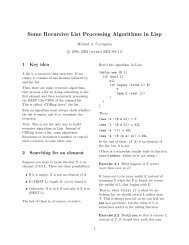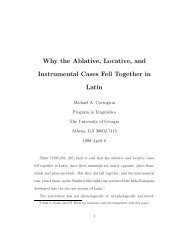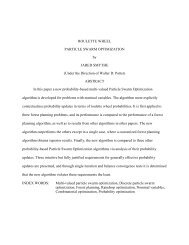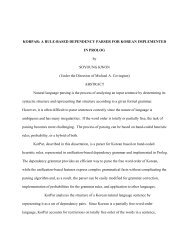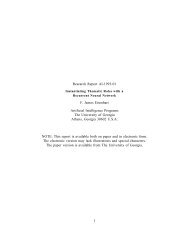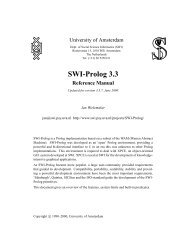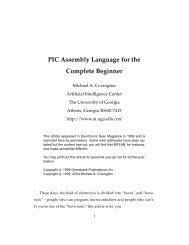human judgment in diagnosing problem behavior in horses using
human judgment in diagnosing problem behavior in horses using
human judgment in diagnosing problem behavior in horses using
You also want an ePaper? Increase the reach of your titles
YUMPU automatically turns print PDFs into web optimized ePapers that Google loves.
Chapter 6 is the result and discussion chapter <strong>in</strong> which the result from the<br />
evaluation and usage of the system will be used as a conclusion on how the user, <strong>in</strong> this<br />
case the owner or the tra<strong>in</strong>er/handler of the horse, makes <strong>judgment</strong>s on what type of<br />
<strong>behavior</strong>al <strong>problem</strong>s the horse is display<strong>in</strong>g. The model of <strong>judgment</strong> made by the user<br />
will be compared to the Brunswick’s Lens Model, which is found to be the same <strong>in</strong> the<br />
sense that accord<strong>in</strong>g to the Lens Model, the environment and the perceiver have to play<br />
an active role <strong>in</strong> the <strong>judgment</strong> process. Lastly, the overall conclusion of the study will<br />
also be discussed <strong>in</strong> this chapter. It will <strong>in</strong>clude limitation or <strong>problem</strong>s related to the<br />
study, as well as the comparison between the models. Further studies and other areas of<br />
focus are also suggested.<br />
12






